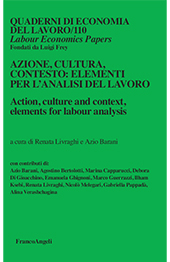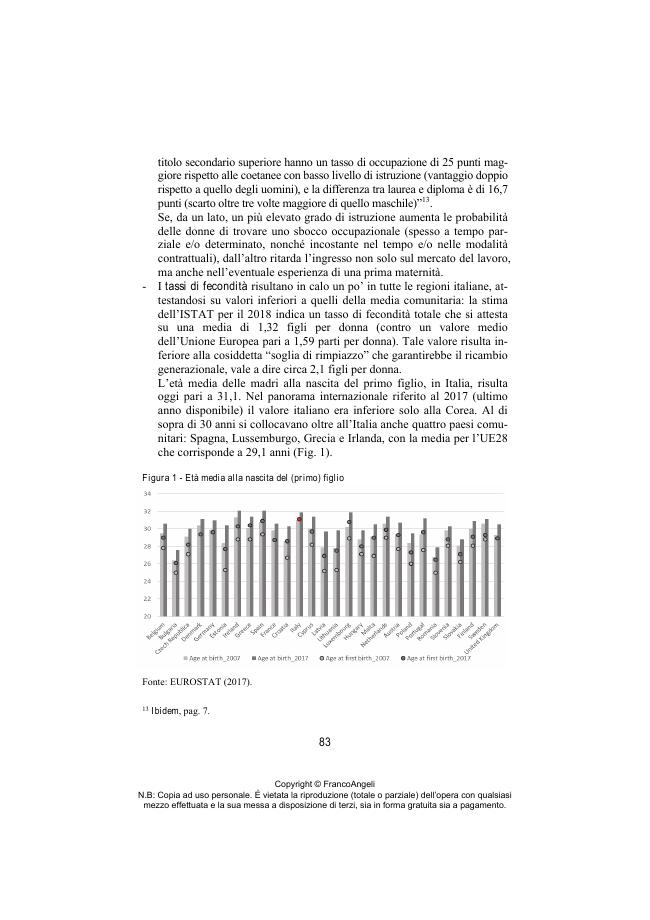Istruzione, fecondità e occupazione femminile : un trinomio su cui investire
73-92 p.
In questa nota si affronta il problema del calo demografico, associandolo a due aspetti importanti ad esso correlati: l'istruzione e l'occupazione, esaminati nella distinzione di genere e nelle differenze territoriali. L'ipotesi da suffragare è che le donne trovino nell'investimento in istruzione una relativa compensazione del "costo della maternità", inteso come minor reddito derivante da una maggiore discontinuità lavorativa, sia rispetto alle donne che non hanno figli, sia - a maggior ragione - rispetto agli uomini.
Il prolungamento del percorso di studi potrebbe, tuttavia, rivelarsi una "trappola" per le donne, o quando le scelte di procreazione siano troppo tardive, sacrificando così la maternità effettiva, o quando questa sia troppo precoce, incidendo negativamente sull'inserimento e/o sulla permanenza del mondo del lavoro. Dopo un breve richiamo all'approccio teorico qui prescelto, si procede in questo lavoro con l'analisi descrittiva del fenomeno in esame. Vengono, infine, individuati alcuni interventi che si ritengono necessari a conciliare - sul piano microeconomico e familiare - la sfera produttiva con quella riproduttiva, nonché a consentire - sul piano macroeconomico e sociale - maggiori tassi di istruzione, di natalità e di occupazione. [Testo dell'editore].
This analytical note aims to affront the problem of demographic decline, by associating it to the two related aspects: education and paid employment, examined through gender and territorial lenses. The hypothesis we explore is that higher investment in education is seen as a form of compensation for motherhood penalty, meant to be a loss in earnings experienced by mothers after the child-birth, with respect to both women without children and even more so with respect to men.
The increasing duration of studies turns to be a form of a trap for women, both in case they postpone procreation until when it could be too late, sacrificing this way the effective fertility, and when they decide to give birth too early, influencing then the process of getting into job and remaining at work later in life. After a brief recall of the theoretical approach chosen for this study, we proceed with a descriptive analysis of the phenomenon in question. Finally, we identify the type of interventions which are necessary to reconcile - from the microeconomic and household point of view - the productive and reproductive spheres of life and allow - from the macroeconomic and social point of view - for higher educational attainments, fertility and employment. [Publisher's text].
-
Articles from the same issue (available individually)
-
Information
ISSN: 1971-8470
KEYWORDS
- Istruzione, Fecondità, Occupazione femminile
- Education, Fertility, Female Employment



